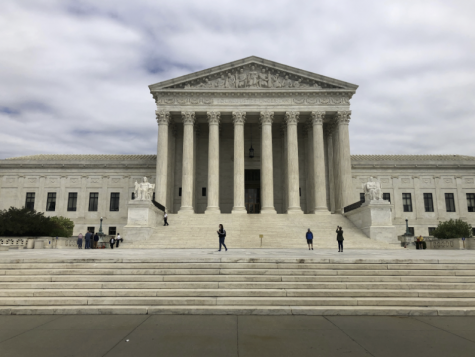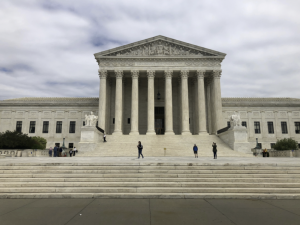Mourning Justice Ruth Bader Ginsburg
Supreme Court Justice Ruth Bader Ginsburg’s death has left many Americans in a state of grief. Some struggle with properly mourning Ginsburg and finding a balance between celebrating her achievements while acknowledging her wrongdoings.
At five feet tall and 100 pounds, Justice Ruth Bader Ginsburg was small in size, but held enormous power. Justice Ginsburg was a staunch fighter for equality, a champion of womens’ rights and more recently, a pop culture icon. She served 27 years on the Supreme Court of the United States, building a lasting legacy that helped to shape America, inspiring generations in the process. The announcement of Ginsburg’s death on Sept. 18 shocked the nation and has left many in a state or grief.
However, despite all of her achievements, Ginsburg has accumulated some criticism over the years that many claim must be acknowledged after her death. While Ginsburg wasn’t overly problematic, many Americans are struggling with how to properly mourn her. How do we celebrate her life and accomplishments while also acknowledging her wrongdoings?
One of Ginbrug’s scandals took place in a 2016 interview. When asked about the Colin Kaepernick protests, she labeled them as “Dumb… direspectful… [and] Ridiculous.” As Ginsburg is often labeled as a social justice warrior, these comments sparked outrage.
Although it is important to hold people accountable for their actions – especially those holding important positions in government – the discussion surrounding Ginsburg’s death should not be dominated by critiques.
After receiving so much backlash, Ginsburg released a statement explaining that when asked the interview question, she wasn’t fully educated on the purpose of Kaepernick’s protests. She claimed her comments were “inappropriately dismissive and harsh,” and wished she instead had declined to respond.
Ginsburg received more backlash in 2016 after criticizing President Trump. She told CNN that Trump is a “faker… He says whatever comes into his head at the moment [and] he really has an ego.” She also told the New York Times that she couldn’t imagine what America would be like with Trump as president and didn’t even want to think about the effect he would have on the Supreme Court.
These comments also received public backlash, including tweets from President Trump who called for her resignation. Ginsburg released another statement apologizing for her remarks, saying that “Judges should avoid commenting on a candidate for public office,” and in the future she would be more cautious with her words.
Ginsburg has also been criticized for her stance on racial issues, as she didn’t have a diverse staff of law clerks.
Like any other human being, Ginsburg made mistakes. Although it is important to hold people accountable for their actions – especially those holding important positions in government – the discussion surrounding Ginsburg’s death should not be dominated by critiques. Unlike many government and political figures today, she was willing to acknowledge her mistakes, apologized for her actions and aimed to grow from them. Ginsburg can be condemned for her mistakes, but people also must remember all the good she has done for this country.
For many women and girls, including myself, Ginsburg has given us the confidence to be bold. She refused to be denied equal treatment because of her gender and fought tirelessly for what she believed in.
In her 87 years on earth, Ginsburg did way more good than bad. She changed the lives of all Americans taking part in landmark court cases such as legalizing abortion, gay marriage and more. Ginsburg broke barriers in her career before and after her appointment to the Supreme Court, paving the way for generations of women to come after her.
Ginsburg has become a symbol of empowerment for women, as someone who refused to be denied equal treatment because of her gender. Her face has been plastered on water bottles, stickers, tote bags, mugs and other accessories for women to carry her message with them, and continue her legacy.













































![[Feb. 2017 Arts] Ruth Bader Ginsburg’s autobiography reveals the mundane side of American politics](https://www.inklingsnews.com/wp-content/uploads/2017/02/w-w-crown-356x475.jpg)



![[Feb. 2017 Arts] Ruth Bader Ginsburg’s autobiography reveals the mundane side of American politics](https://www.inklingsnews.com/wp-content/uploads/2017/02/w-w-crown.jpg)












